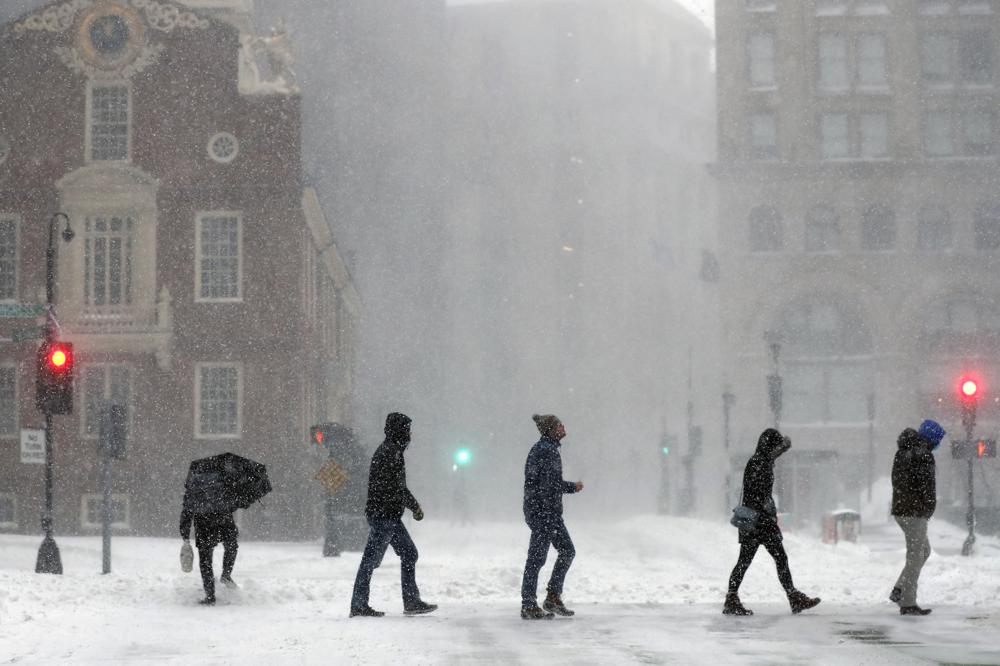
BOSTON — Gusty winds and falling temperatures plunged the East Coast into a deep freeze as people dig out after a powerful nor’easter dumped mounds of snow, flooded coastlines and knocked out power to tens of thousands.
Dangerous wind chills fell below zero in many locations across the region on Sunday after the storm dumped snow from Virginia to Maine. Philadelphia and New York had plenty of snow, but Massachusetts bore the brunt of the storm, with the town of Sharon getting more than 30 inches (76 centimeters) of snow before the storm moved out.
The wind continued raging as over 100,000 lost power, mostly in Massachusetts, hampering crews’ ability to work on overhead lines. No other states reported widespread outages.
Winds gusted as high as 83 mph (134 kph) on Cape Cod in Massachusetts. It scoured the ground bare in some spots and piled the snow into huge drifts in others. Coastal towns flooded, with wind and waves battering North Weymouth, south of Boston, flooding streets with a slurry of frigid water, according to video posted on social media. Other videos showed a street underwater on Nantucket and waves crashing against the windows of a building in Plymouth.
Boston resident Jesse Ledin owns a home-goods rental business startup. He was out walking his dog in the storm, wearing ski goggles Saturday as he navigated gingerly through huge snow drifts and painful wind gusts.
“It’s pretty intense with the winds getting up to 70 miles (112 kilometers) an hour. As for the depth, it’s pretty deep in spots with the wind and the snow drifts, but it’s pretty nasty out and I definitely wouldn’t want to be driving. So it’s nice to be able to walk through these huge snowdrifts and in pretty tough conditions,” Ledin said.
Climate change, particularly the warming ocean, probably influenced the strength of the storm, atmospheric researchers said.
Much warmer ocean waters “are certainly playing a role in the strengthening of the storm system and increased moisture available for the storm,” said University of Oklahoma meteorology professor Jason Furtado. “But it isn’t the only thing.”
The storm had two saving graces: Dry snow less capable of snapping trees and tearing down power lines, and its timing on a weekend, when schools were closed and few people were commuting.



